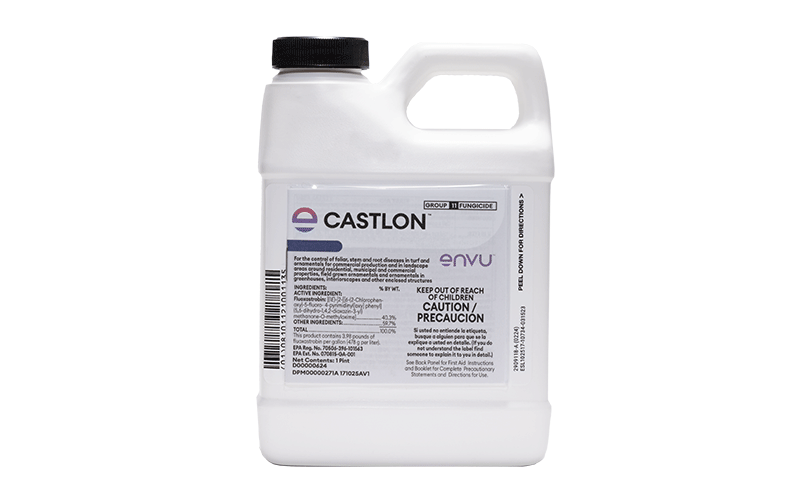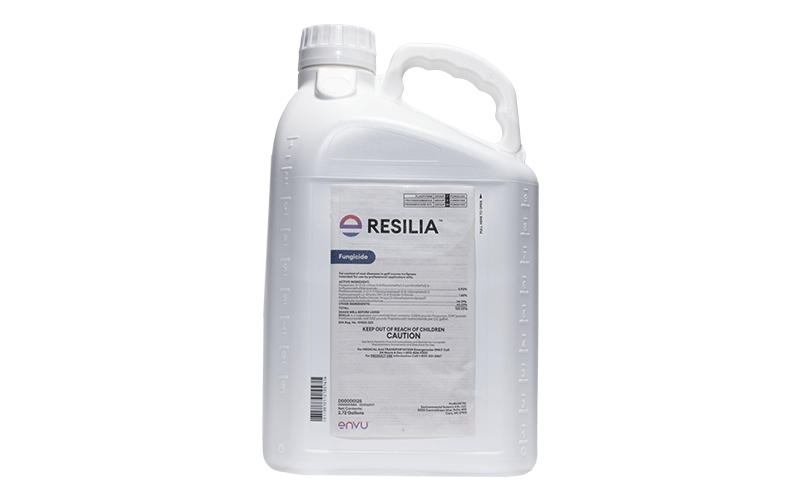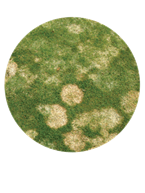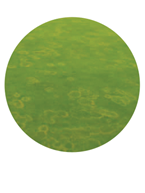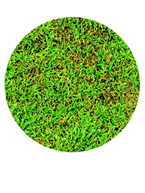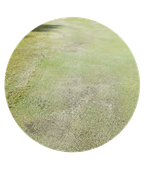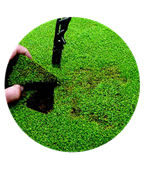The Problem
Fairy ring remains one of the more difficult turf diseases to control. It is caused by any of 60 or more soil-borne basidiomycete fungi. Fairy ring fungi do not directly attack plants, but instead cause problems by stimulating turf and/or causing hydrophobic soils that lead to localized dry spot (LDS). Fairy ring fungi use lignin in thatch and organic matter as a food source. All turfgrass species and golf course locations can be affected by fairy ring. Greens are particularly vulnerable to fairy ring given their low mowing height and sand-based rootzone.
What To Look For
Fairy ring occurs in rings, arcs or patches that can vary greatly in size. The size often ranges from several inches to several feet in diameter, with large rings reaching 10 feet or more. Three types of fairy ring are used to help describe symptoms and associated turf damage; type 1 = brown rings of dead turf, type 2 = green rings of stimulated turf growth and type 3 = the presence of mushrooms or puffballs.
Above ground mushrooms or puff balls may not always be seen with fairy ring. Instead, a layer of white mycelia or a band of dry, brown-orange or yellowish material will be present in the thatch, mat or soil layers. Depth of fairy ring activity is important information to know for fungicide applications.
Aggressive turf management with minimal water, nitrogen and low mowing heights can increase fairy ring symptom severity. During mid-summer heat stress, fairy ring can quickly progress from type 2 green rings to type 1 dead rings.
The Solution
Core aerification, vertical mowing and frequent sand topdressing reduce thatch and organic matter, minimizing fairy ring severity. Aerification by needle tining or spiking also improves overall drainage and gas exchange.
Water management, fertility and mowing height can influence symptoms of fairy ring. Fairy ring symptoms are enhanced on thin, slow-growing and nitrogen-starved turf. Nitrogen levels (tissue testing) should be evaluated to help maintain optimal turf health. Wetting agents are useful to address LDS associated with fairy ring activity. Apply wetting agents regularly, but space them two weeks apart from DMI fungicide applications.
Wetting agents can be mixed with non-DMI fungicides, but tankmixing is not recommended with DMIs because it risks turf injury.
Preventive fairy ring control is much more effective than curative control. Current fairy ring timing for turfgrass starts at 5560°F (uses a 5-day average soil temperature at a 2-inch depth). Research at NC State University showed first preventive DMI fungicide application at soil temperatures of 55, 60, 65 or 70°F resulted in fairy ring control. Therefore, in Texas and Florida timings are suggested to use a 65-70°F soil temperature for the first preventive application to help extend fairy ring prevention during summer. Solutions for fairy ring include Densicor®, Mirage® Stressgard® and Tartan® Stressgard.
DMI fungicides can exhibit plant growth regulation effects on ultra-dwarf greens. One exception is Densicor which affords excellent turf safety. In addition, Stressgard Technology in Tartan Stressgard and Mirage Stressgard improves DMI tolerance in bermudagrass.
Applications should be made at 2-4 gallons spray volume with flat fan nozzles and watered-in to the depth of the fairy ring as needed within 10 hours of application.
Tartan Stressgard provides early-season dollar spot control which is an important disease of seashore paspalum and can also affect bermudagrasses and zoysiagrasses. Stressgard will reduce summer stresses on turfgrass, such as mid-day wilt caused by fairy ring and localized dry spot
Additional resources
| Solution sheet - Fairy ring - cool season | |
| Solution sheet - Fairy ring - warm season |



